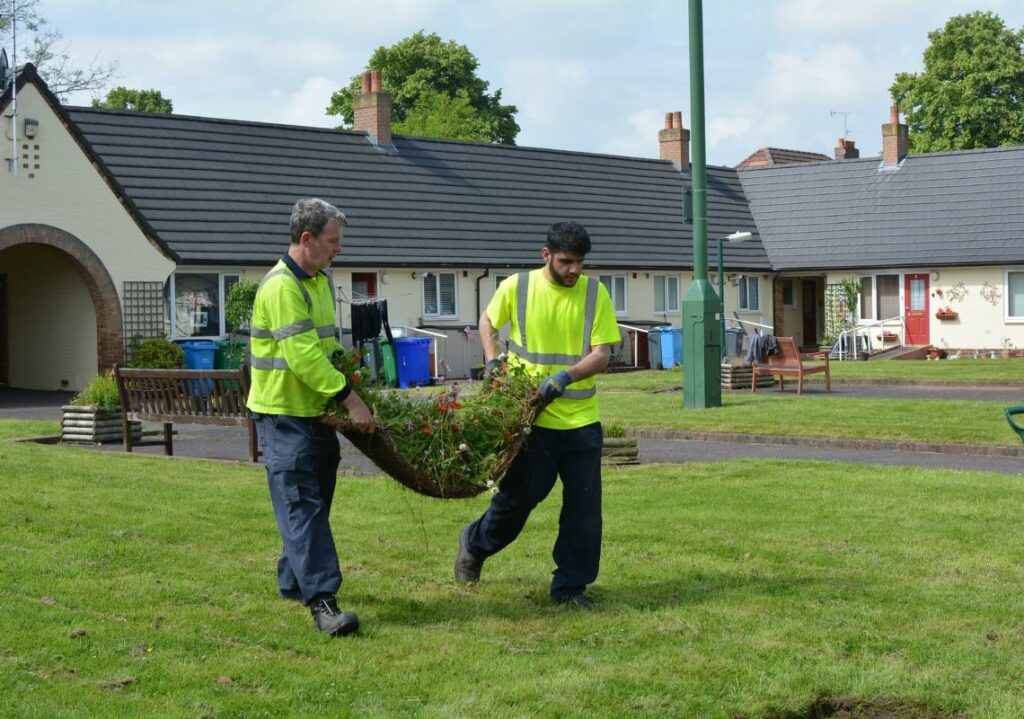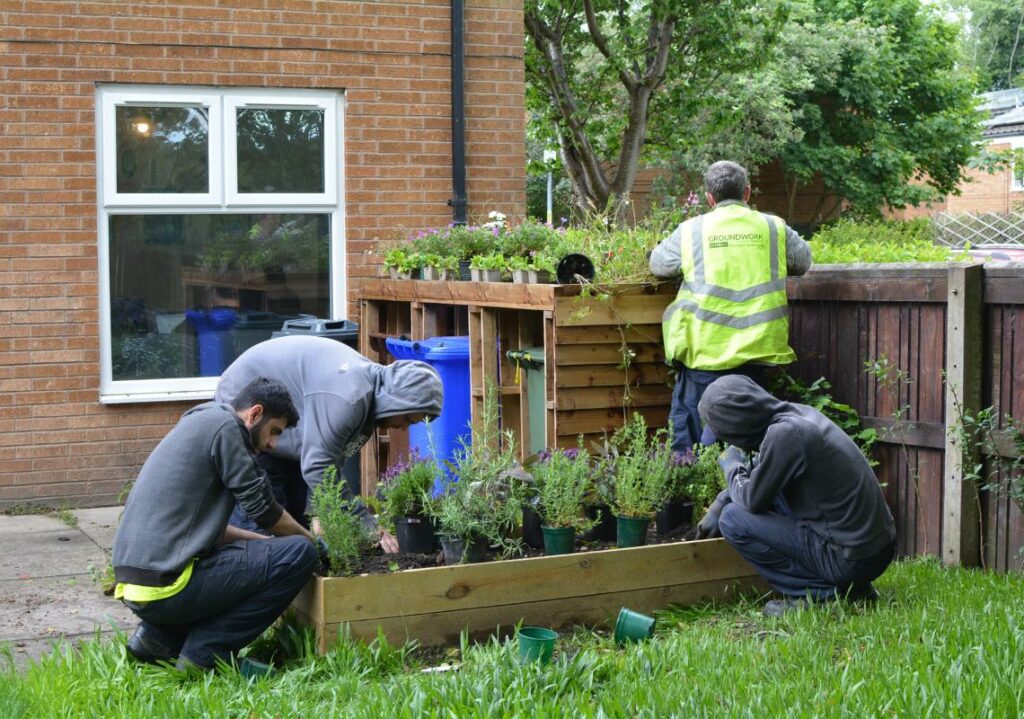BLOG – How To Create Climate & Nature Friendly Gardens At Home
Groundwork’s Landscape Designers regularly work with local councils and housing providers to make public spaces more resilient to the effects of climate change and more diverse for plants and wildlife, but what can you do in your own home garden?
In this blog, Lucy Stowell-Smith, Natural Environment Lead at Groundwork Greater Manchester shares some top tips.
1. Avoid hard surfacing where possible
Research by the RHS and Sheffield University highlight that 4.5 million front gardens in the UK contain no plants at all, and a quarter of front gardens are now totally paved over.
Despite the perceived efficiencies of hard surfacing your garden it’s essential that we avoid this wherever possible and focus on investing time in our gardens so there are enough spaces for nature in our urban landscape.
Plants produce oxygen and absorb carbon-dioxide, helping keep our air quality regulated. Their root systems absorb water, helping slow the flow during times of heavy rain. Trees and shrubs provide homes for wildlife and flowering plants provide pollen for bees and butterflies. Your front garden is one of many stepping stones for wildlife in your neighbourhood.
Plus, research shows that green spaces have positive impacts on our feelings of wellbeing and our mental health.
If hard surfacing is essential, consider using permeable surfaces instead, such as gravel so rain water can slowly seep through, helping slow the flow during flash flooding events.

2. Steer away from the traditional grass lawn
Whilst a lawn is more wildlife friendly than paving, home owners may not want the challenge of mowing it regularly. Planting wildflower meadows is a great option if you’re fortunate to have a sunny garden. Wildflowers provide great habitats for insects and birds and only need to be cut twice a year.
Alternatively, low growing plants such creping thyme or camomile create a lovely flowering evergreen lawn that also smells fantastic and act as great pollinators. You can place stepping stones throughout so your garden space is still useable.

3. Add variety in your garden
By introducing mixed and seasonal planting into your garden you’ll not only be delighted by the variety of sights and smells throughout the year but the wildlife will be pleased too!
Having a mixture of flowering shrubs, for example Viburnum × Bodnantense ‘Dawn’ which flowers in winter, with spring bulbs (Snowdrops, Daffodills and Tulips to take you through the spring season) summer flowering perennials (Lavender, Gaura, Echinacea) and late autumn colour (Anemones, Penstemons, Rudbeckia) will keep the garden interesting and exciting for you, but also provide a valuable food source for insects and birds.
If you’re worried about introducing plant species that you don’t know how to look after a good top tip is to look for varieties that have been awarded the Award of Garden Merit from the RHS. These varieties are more robust species that have passed various plant trials.
For those looking specifically to support wildlife with your garden look out for the RHS Plants for Pollinators badge.
4. Consider creating a green roof
Bin and bicycle stores are great opportunities to create a green roof in your garden. These could be made of wildflowers, sedum or even a mini herb garden or allotment space. Don’t forget to add climbing plants up the sides to create even more spaces for wildlife.
Check out our ‘how to create a green roof’ blog here.

5. Think about your external lighting
Lighting can confuse nocturnal animals so if you have outdoor lights think about directional lighting, lighting only where you need it most and keeping it at a low level wherever possible. Lighting the edges of a path can illuminate a space, giving it a welcoming glow rather than an overhead floodlight which unnecessarily lights the whole garden and can feel very harsh.
